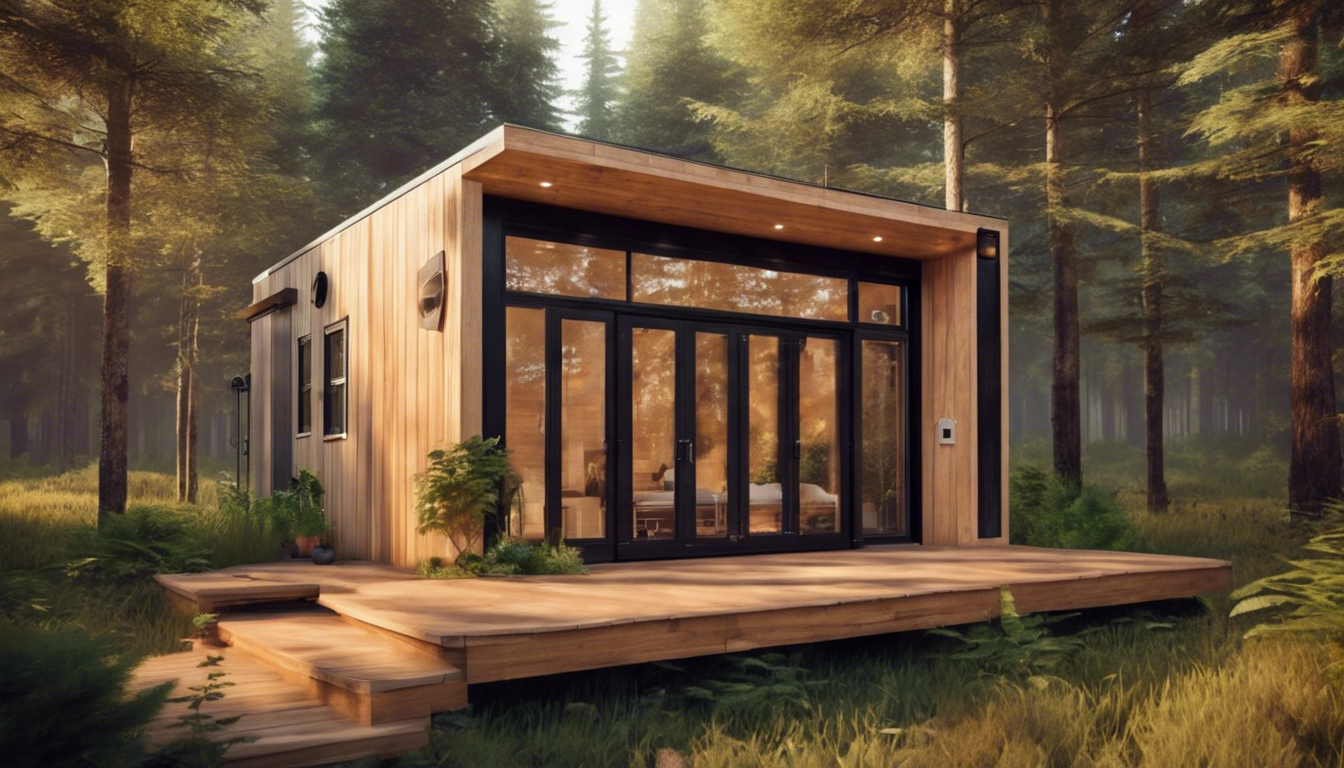Tiny homes are small, efficient living spaces that maximize every square foot.
They appeal to those looking to downsize, simplify their lives, or minimize their environmental impact.
Tiny homes floor plans vary widely, allowing for personalization and innovation.
Choosing the right floor plan can enhance comfort and functionality.
In this article, we will explore the benefits of innovative floor plans and key features to consider when designing your tiny home.
We will also highlight five creative tiny home floor plans and provide tips for customizing your design.
The Most Popular Modular/Tiny Home On Amazon
Key Features to Consider in Tiny Home Design
When exploring tiny homes floor plans, it is essential to focus on key features that enhance living experiences while maximizing space.
Start with efficient layouts that minimize wasted areas.
Open floor concepts create a sense of openness, making the space feel larger.
Consider multi-purpose furniture, such as sofa beds or folding tables, which adapt to various needs.
Ample storage solutions are vital; look for built-in shelves or under-bed storage to keep clutter at bay.
Natural lighting also plays a crucial role; large windows or skylights brighten small spaces and improve comfort.
Finally, prioritize energy efficiency by selecting sustainable materials and appliances.
These aspects collectively contribute to effective and practical tiny home designs.
Top 5 Creative Tiny Home Floor Plans
Choosing the right tiny homes floor plans is essential for maximizing space and comfort.
Here are the top 5 creative designs that cater to different lifestyles and needs.
1.
Open Concept Living: This floor plan features an open layout combining the kitchen, dining, and living areas.
It removes walls to create a feeling of spaciousness while allowing natural light to flow through the entire space.
2.
Lofted Bedroom: Many tiny homes opt for a lofted bedroom design.
This layout utilizes vertical space, keeping the main floor free for living and entertaining.
The loft can provide a cozy sleeping area while leaving room below for a comfortable living space.
3.
Split-Level Design: A split-level tiny home introduces different floor heights, maximizing the use of a smaller footprint.
This design can create distinct zones for sleeping, cooking, and relaxing, all while maintaining an open feel.
4.
Nook Spaces: Incorporating nook spaces into your tiny home floor plans can create additional storage or seating areas.
These cozy nooks can fit into corners or under stairs, offering unique functional features without taking up much space.
5.
Expandable Plans: Some tiny homes are designed to expand.
These flexible plans allow homeowners to add modules, increasing living space when needed.
This adaptability makes it a practical choice for growing families or changing needs.
When choosing a floor plan, consider how you will use your space.
Each of these options focuses on functionality and efficiency, making the most of every square foot.
Tips for Customizing Your Tiny Home Floor Plan
Customizing your tiny home floor plan allows you to create a space that fits your lifestyle and needs.
First, assess how you intend to use each area.
Consider adding multifunctional furniture, like a sofa bed or a foldable table, to maximize space efficiency.
Second, think about storage options.
Built-in shelves and under-the-bed storage can help maintain a clutter-free environment.
Third, make use of vertical space.
High ceilings can accommodate lofted sleeping areas or hanging plants, enhancing your living area.
Lastly, draw your layout on paper or use design software to visualize any changes.
Remember, tiny homes floor plans should reflect your personal style while offering practicality.
Frequently Asked Questions
What are tiny homes?
Tiny homes are compact dwellings that typically range from 100 to 400 square feet.
They prioritize efficiency and simplicity in design, often incorporating multifunctional spaces to enhance livability.
What are the benefits of choosing innovative floor plans for tiny homes?
Innovative floor plans maximize space utilization, enhance functionality, and provide unique design aesthetics.
They can also offer more storage solutions and cater to specific lifestyle needs, making the most out of limited square footage.
What key features should I consider when designing a tiny home?
When designing a tiny home, consider features like multifunctional furniture, adequate storage, natural lighting, energy efficiency, and outdoor space utilization.
These elements can greatly affect the comfort and usability of the home.
Can you provide examples of creative tiny home floor plans?
Yes!
Here are five examples: 1) The Lofted Cabin, offering an upper sleeping area; 2) The Studio with a foldable Murphy bed; 3) The L-Shaped layout for maximizing corner space; 4) The Tiny Villa with outdoor extensions; and 5) The Modular Tiny Home for expandable designs.
How do I customize my tiny home floor plan to suit my needs?
To customize your tiny home floor plan, start by identifying your lifestyle requirements, then select suitable layouts and features.
Incorporate personal touches with colors, materials, and furniture choices, while also considering future needs for flexibility and adaptability.




Leave a Reply